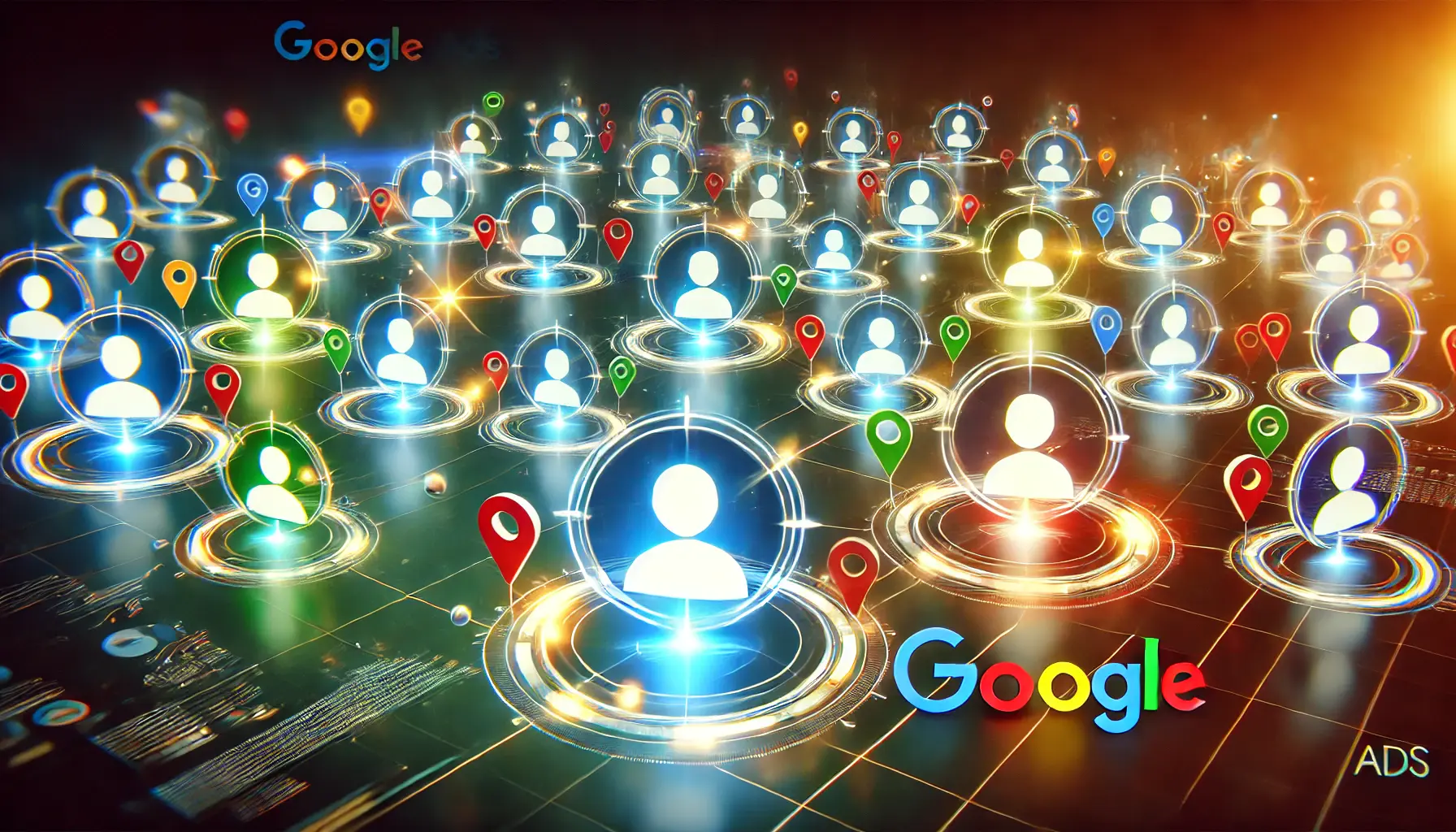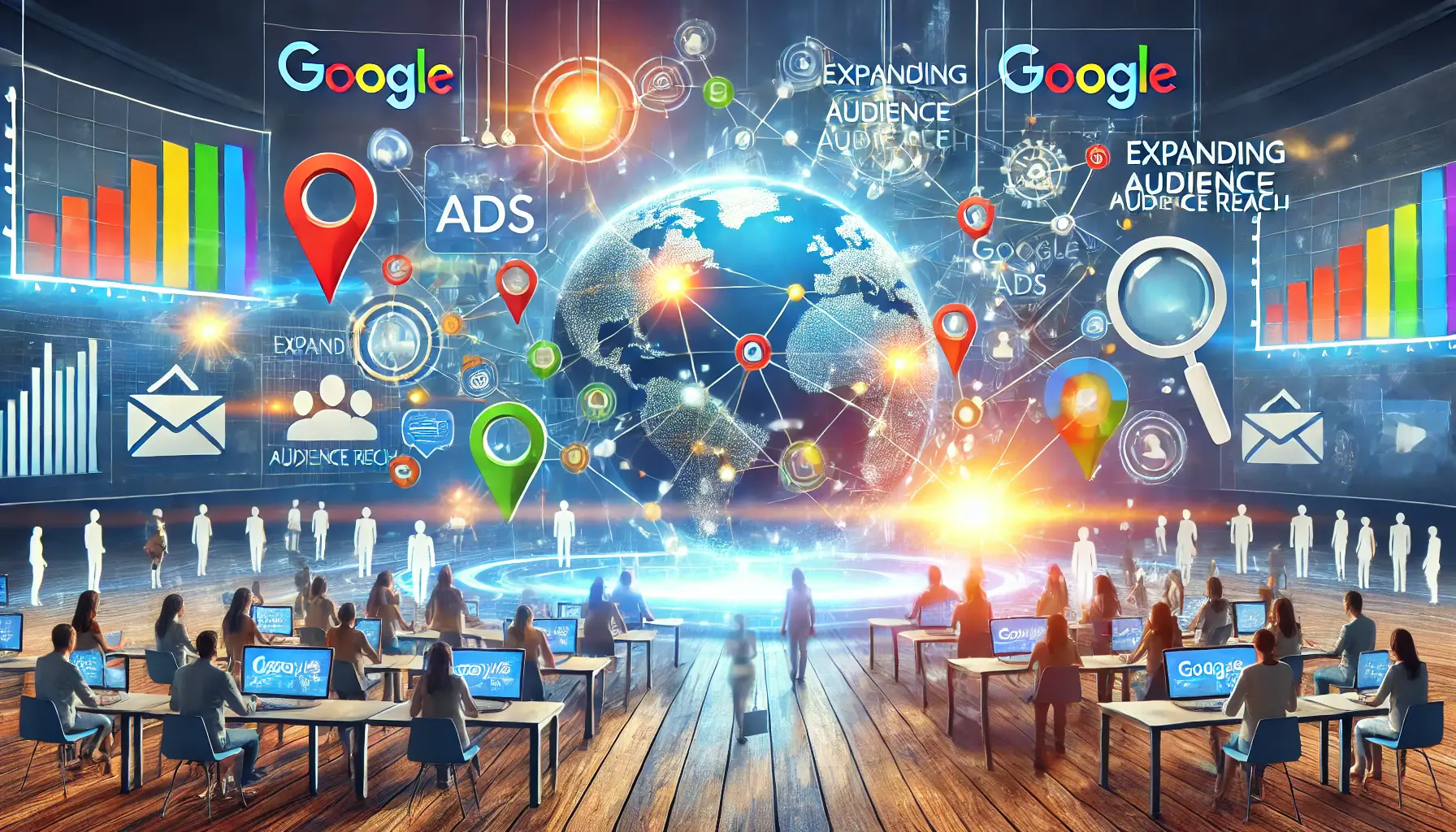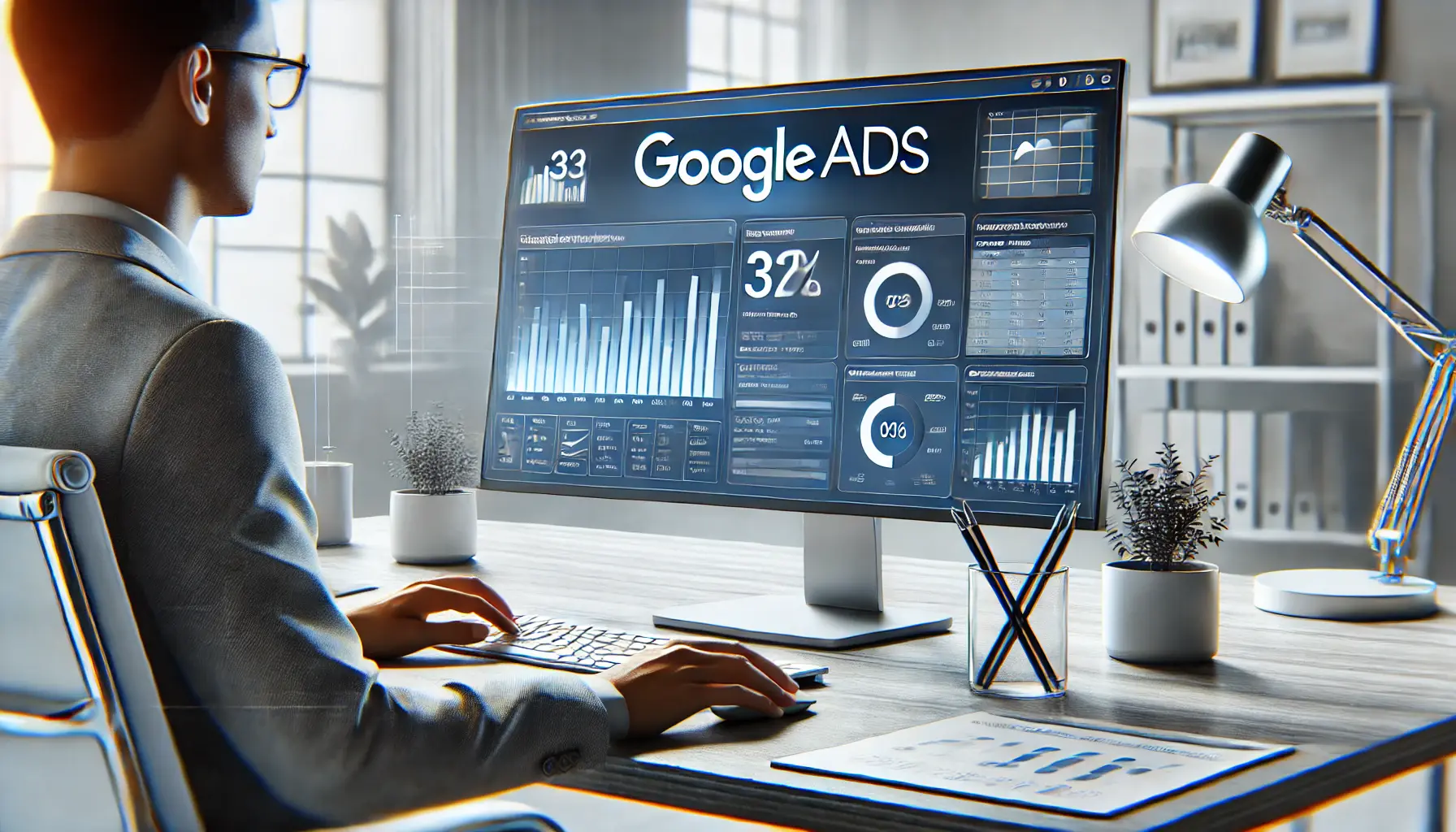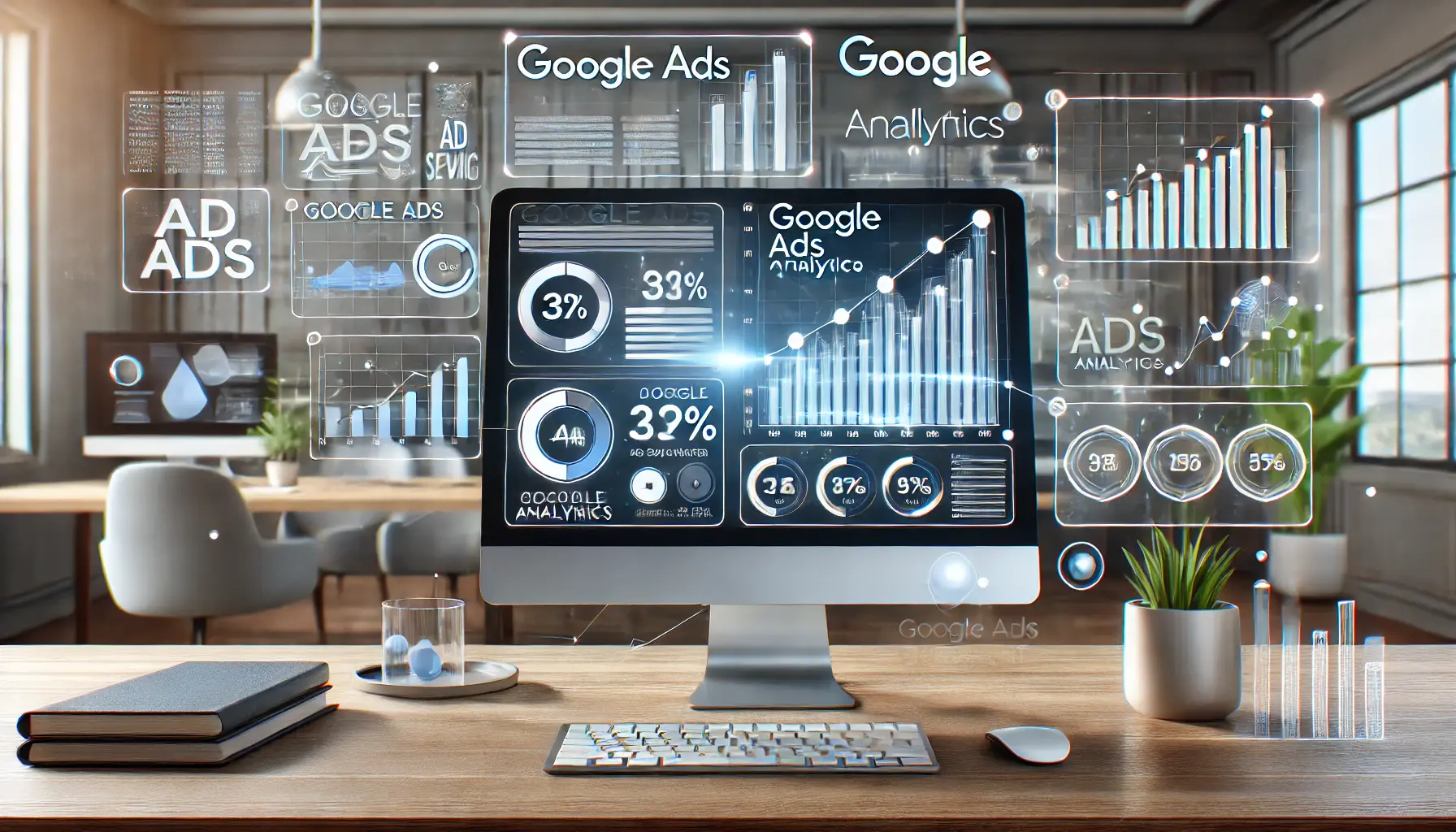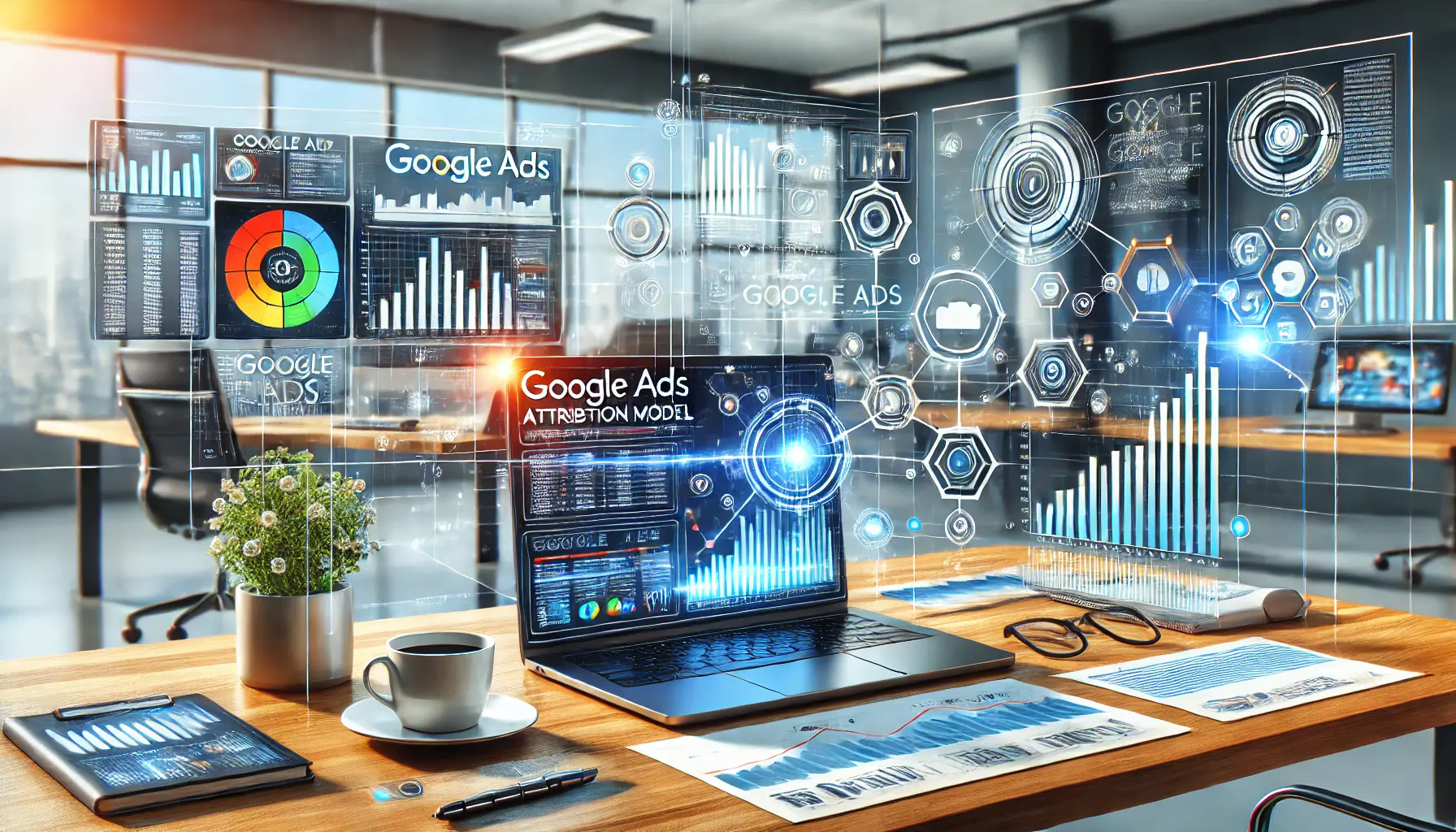Google Ads has always played a leading role in digital advertising, empowering business brands to reach their targeted audiences effectively.
The introduction of Similar AudiencesA Google Ads feature that allowed targeting users with traits similar to existing audience lists. was a significant innovation that helped advertisers grow their reach.
However, recent updates indicate that Google Ads has decided to phase out this feature, leaving many wondering how to reshape their marketing strategies.
If you’ve relied on Similar Audiences to drive campaign success, understanding these changes and their implications is crucial.
- Understanding the Phase-Out of Similar Audiences in Google Ads
- What the Similar Audiences Update Means for Advertisers
- Exploring Alternatives to Similar Audiences in Google Ads
- Best Practices for Transitioning Away from Similar Audiences
- Future Trends in Audience Targeting: Post-Similar Audiences Era
- Summarizing the Impact and Transition: Moving Beyond Similar Audiences
- Frequently Asked Questions about Similar Audiences in Google Ads
Understanding the Phase-Out of Similar Audiences in Google Ads
Similar Audiences, as the name suggests, allowed advertisers to find users similar to their existing audience lists.
This feature leveraged Google’s data-driven algorithms to identify individuals with comparable behaviors, interests, and demographics, making it easier for advertisers to scale their campaigns effectively.

Illustration showcasing audience segmentation and the concept of ‘similar audiences’ in digital advertising.
Overview of Similar Audiences
Introduced as a tool for enhanced targeting, Similar Audiences was widely used to create lookalike audiences based on first-party dataData collected directly from a business's interactions with its users or customers., such as customer email lists or website visitors.
This allowed advertisers to connect with potential customers who shared traits with their most engaged audience segments.
- Enabled targeted ads to users with similar interests.
- Increased conversion rates by focusing on high-potential prospects.
- Offered a cost-effective method to scale campaigns efficiently.

A visual representation of the timeline for the phase-out of Similar Audiences in Google Ads.
Timeline for Deprecation
Google announced the gradual phase-out of Similar Audiences in 2022, with complete removal expected by 2024.
Advertisers were given time to adapt to this change, explore alternatives, and refine their strategies.
This timeline reflects Google’s ongoing shift toward privacy-centricFocused on protecting user privacy and complying with data protection regulations. advertising solutions.
Key milestones in the deprecation timeline:
- 2022: Announcement of the phase-out plan.
- 2023: Limited ability to create new Similar Audiences lists.
- 2024: Similar Audiences will cease to be a targeting option.

An abstract illustration representing the shift towards privacy-centric solutions in digital marketing.
Reasons Behind the Change
Google’s decision to retire Similar Audiences is deeply rooted in its commitment to privacy and data protection.
As third-party cookiesSmall pieces of data stored on a user's device by websites other than the one they are visiting, often used for tracking. are phased out across the industry, Google is transitioning toward enhanced first-party data usage and AI-driven targeting methods.
- Compliance with evolving global privacy regulations.
- Reduced reliance on third-party data sources.
- Focus on sustainable, privacy-oriented advertising solutions.
While this shift presents challenges, it also opens the door to innovative, adaptive strategies that prioritize user trust and data security in digital advertising.
Google Ads phasing out Similar Audiences highlights the shift toward privacy-focused advertising. Advertisers need to adapt strategies quickly to stay competitive.

Illustration showcasing the shift in advertising strategies following the update to Similar Audiences in Google Ads.
What the Similar Audiences Update Means for Advertisers
With the retirement of Similar Audiences in Google Ads, digital advertising is undergoing a significant transformation.
Beginning in August 2023, advertisers will no longer be able to use this feature to reach users similar to their current customer base.
This change necessitates a reassessment of existing marketing strategies to ensure that campaign performance remains unaffected.

A visual representation of campaign performance impact, showing fluctuations in results and changes in digital marketing strategies.
Campaign Performance Impact
For many advertisers, Similar Audiences were a cornerstone of expanding reach and boosting conversion rates.
The removal of this feature may result in:
- Reduced audience reach, potentially lowering impressions and click-through rates.
- Decreased conversion rates due to the loss of an effective targeting tool.
- Increased reliance on alternative targeting strategies, which may require time and resources to optimize.

A visual representation of the difficulties in audience targeting in digital marketing, with fragmented data connections and barriers.
Challenges in Audience Targeting
Without Similar Audiences, advertisers face several challenges:
- Finding new ways to identify potential customers with similar traits to their existing audiences.
- Adapting to Google’s automated solutions, such as optimized targeting and audience expansion, which may involve a learning curve.
- Navigating compliance with evolving privacy regulations while maintaining effective advertising strategies.

A visual representation of the necessary adjustments in digital marketing strategies, featuring data charts, automated targeting, and first-party data symbols.
Adjustments Needed for Current Strategies
To adapt to these changes, advertisers should consider the following steps:
- Leverage First-Party Data: Use your customer data to create highly personalized and relevant campaigns.
- Adopt Automated Solutions: Utilize Google’s optimized targeting and audience expansion features to discover new potential customers.
- Monitor Performance Metrics: Regularly evaluate campaign performance to identify necessary adjustments and improve results.
By proactively refining your strategies, you can successfully transition away from Similar Audiences while continuing to achieve effective advertising outcomes.
Adjusting to the loss of Similar Audiences requires leveraging first-party data and exploring Google’s automated targeting tools to maintain campaign performance.
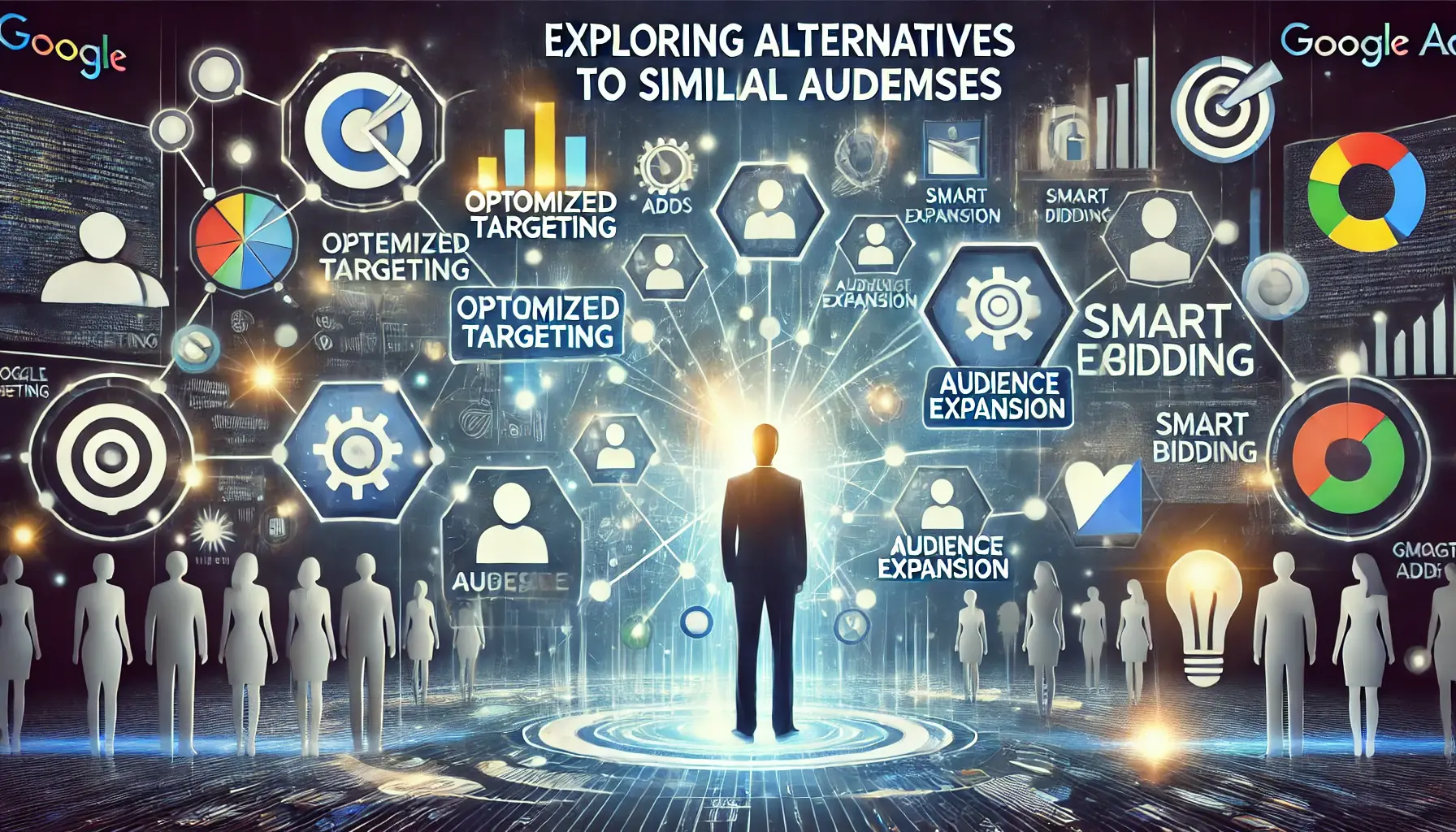
A visual representation of the alternatives to Similar Audiences in Google Ads, focusing on new targeting strategies.
Exploring Alternatives to Similar Audiences in Google Ads
With the deprecation of Similar Audiences in Google Ads, advertisers are seeking effective alternatives to maintain and enhance their targeting strategies.
Fortunately, several options are available to help you reach potential customers who share characteristics with your existing audience.
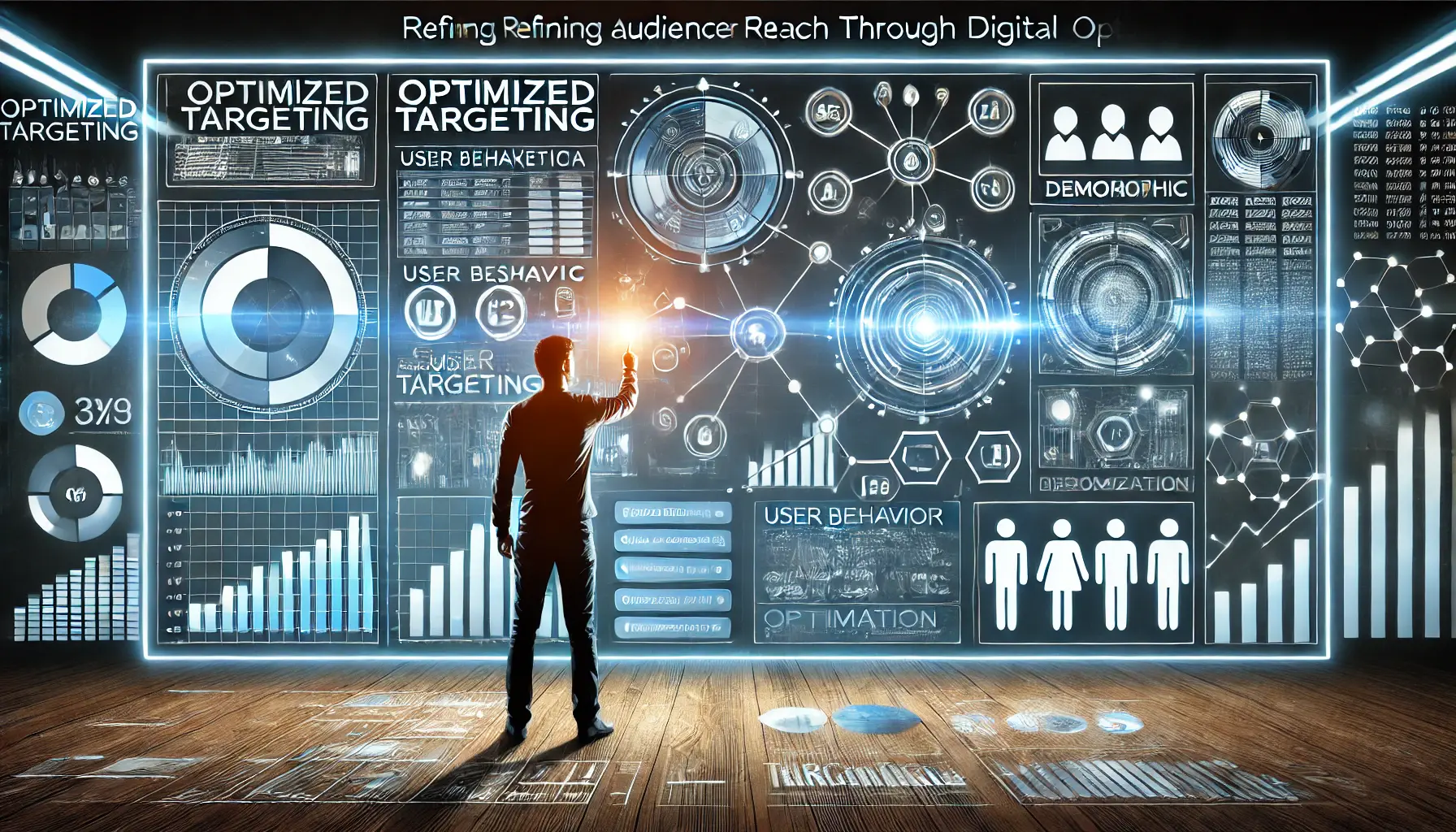
A visual representation of optimized targeting in digital advertising, focusing on audience refinement and advanced techniques.
Introduction to Optimized Targeting
Optimized Targeting by Google helps advertisers reach new and more relevant audiences beyond their manually selected segments.
By leveraging real-time data and machine learning, this feature can:
- Identify users most likely to convert using existing campaign data.
- Broaden the reach to capture users exhibiting similar behaviors and interests.
- Automatically adjust targeting parameters for continuous performance improvement.
Implementing optimized targeting improves campaign efficiency and uncovers new customer segments.

A visual representation of audience expansion in digital advertising, showing the broadening reach of a campaign.
Using Audience Expansion
Audience Expansion enables you to extend your reach by including users who resemble your chosen audience segments.
This tool:
- Allows for targeting at scale without sacrificing relevance.
- Automatically adjusts bids to favor users more likely to convert.
- Provides control over the level of expansion to balance reach and precision.
By utilizing audience expansion, you can reach a broader yet relevant audience.

A visual representation of smart bidding strategies, featuring automated bid adjustments and machine learning icons.
Utilize Smart Bidding Strategies Effectively
Smart Bidding uses machine learning to set bids for individual auctions, helping maximize the number of conversions or conversion value.
Key benefits include:
- Automated bid adjustments based on real-time signals.
- Improved performance by focusing on high-intent users.
- Time savings through automation, allowing for more strategic planning.
Integrating smart bidding strategies helps optimize your campaign outcomes by effectively allocating your budget toward the most valuable prospects.
By embracing these options, you can adapt to the evolving digital advertising landscape and continue achieving your marketing goals effectively.
Optimized targeting, audience expansion, and Smart Bidding provide powerful alternatives to Similar Audiences, ensuring advertisers can still connect with relevant users effectively.

A visual representation of best practices for transitioning to new targeting strategies, focusing on first-party data and privacy-centered solutions.
Best Practices for Transitioning Away from Similar Audiences
As Google Ads phases out Similar Audiences, it’s essential to adopt effective strategies to maintain campaign performance and comply with evolving privacy standards.
Here are key practices to consider:

A visual representation of enhancing first-party data collection, highlighting customer sign-ups, website visitors, and purchase history.
Enhancing First-Party Data Collection
Building a robust first-party data foundation is crucial.
This involves:
- Sitewide Tagging Implementation: Leverage Google’s sitewide tagging to collect valuable information about users interacting with your website, providing insights into customer behavior.
- Creating User Sign-Ups: Encourage users to create accounts or subscribe to newsletters by offering incentives, ensuring data is captured with their permission.
- Leveraging Customer Match: Utilize the collected data to build targeted audience lists, enhancing ad relevance and performance.

A visual representation of privacy-centric advertising solutions, emphasizing data protection, encryption, and secure connections.
Implementing Privacy-Centric Advertising Solutions
Adopting privacy-preserving technologies ensures compliance and builds trust with your audience:
- Consent Management Platforms (CMPs): Deploy CMPs to manage user consent for data collection, aligning with regulations like GDPR.
- Google’s Privacy Sandbox: Explore Google’s Privacy Sandbox initiatives, designed to enable advertising while protecting user privacy.
- Conversion Modeling: Employ machine learning models to estimate conversions in cases where user consent is not granted, preserving measurement accuracy.

A visual representation of monitoring and adapting campaign performance, showcasing real-time metrics and optimization strategies.
Monitoring and Adapting Campaign Performance
Continuous evaluation and optimization are crucial during this transition.
Consider these steps:
- Regular Performance Audits: Analyze campaign performance metrics to identify trends and areas for improvement.
- A/B Testing: Experiment with different targeting strategies and ad creatives to determine what resonates best with your audience.
- Leverage Automated Solutions: Utilize Google’s automated tools, such as Smart Bidding, to optimize bids and achieve campaign goals more effectively.
By following these best practices, you can successfully transition away from Similar Audiences and continue running impactful campaigns in this privacy-first digital ecosystem.
Advertisers must prioritize privacy-centric solutions and continuously optimize their campaigns to adapt to the evolving digital landscape.

A visual representation of future trends in audience targeting, emphasizing advanced targeting tools and AI-powered solutions.
Future Trends in Audience Targeting: Post-Similar Audiences Era
As the digital advertising space evolves, the deprecation of Similar Audiences in Google Ads highlights a shift toward more privacy-oriented and innovative audience targeting strategies.
To maintain successful marketing campaigns, it is crucial to stay ahead of emerging trends.

A visual representation of first-party and zero-party data, highlighting the importance of privacy and data ownership in digital marketing.
First-Party Data and Zero-Party Data at Forefront
As privacy regulations continue to expand, first-party and zero-party data are becoming increasingly important:
- First-Party Data: Information collected directly from user interactions, such as website behavior and purchase history, enables personalized marketing efforts.
- Zero-Party Data: Data that customers intentionally share, including preferences and feedback, allows for deeper personalization and engagement.
Leveraging these data types enhances targeting precision while respecting user privacy.

A visual representation of advancements in contextual targeting, with relevant ads displayed based on webpage content analysis.
Advancements in Contextual Targeting
Contextual targeting is experiencing a resurgence as an effective method to reach relevant audiences without relying on personal data:
- Ads are placed based on the content of the webpage, ensuring relevance to the user’s current interests.
- Improved algorithms analyze page context more accurately, increasing ad effectiveness.
This approach aligns with privacy concerns and enhances the user experience.

A visual representation of AI and machine learning integration in digital marketing, showcasing algorithms, data flows, and neural networks.
Integration of Artificial Intelligence and Machine Learning
AI and machine learning are revolutionizing audience targeting by:
- Analyzing vast datasets to identify patterns and predict user behavior.
- Enabling real-time optimization of ad placements and creative elements.
- Facilitating dynamic audience segmentation for more precise targeting.
Incorporating AI-driven solutions can significantly improve campaign performance.

A visual representation of privacy-centric measurement tools, emphasizing user privacy, consent management, and data protection.
Adoption of Privacy-Centric Measurement Tools
New measurement tools are emerging to assess campaign effectiveness without compromising user privacy:
- Aggregated Reporting: Provides insights without exposing data about individual users.
- Conversion Modeling: Estimates conversions where direct tracking is unavailable, maintaining performance insights.
These tools help ensure a balance between effective measurement and adherence to privacy standards.
By embracing these future trends, advertisers can navigate the post-Similar Audiences era effectively while maintaining healthy and compliant audience targeting strategies.
As the advertising world evolves, focusing on first-party data, contextual targeting, and AI-driven strategies will help marketers succeed in a privacy-focused era.
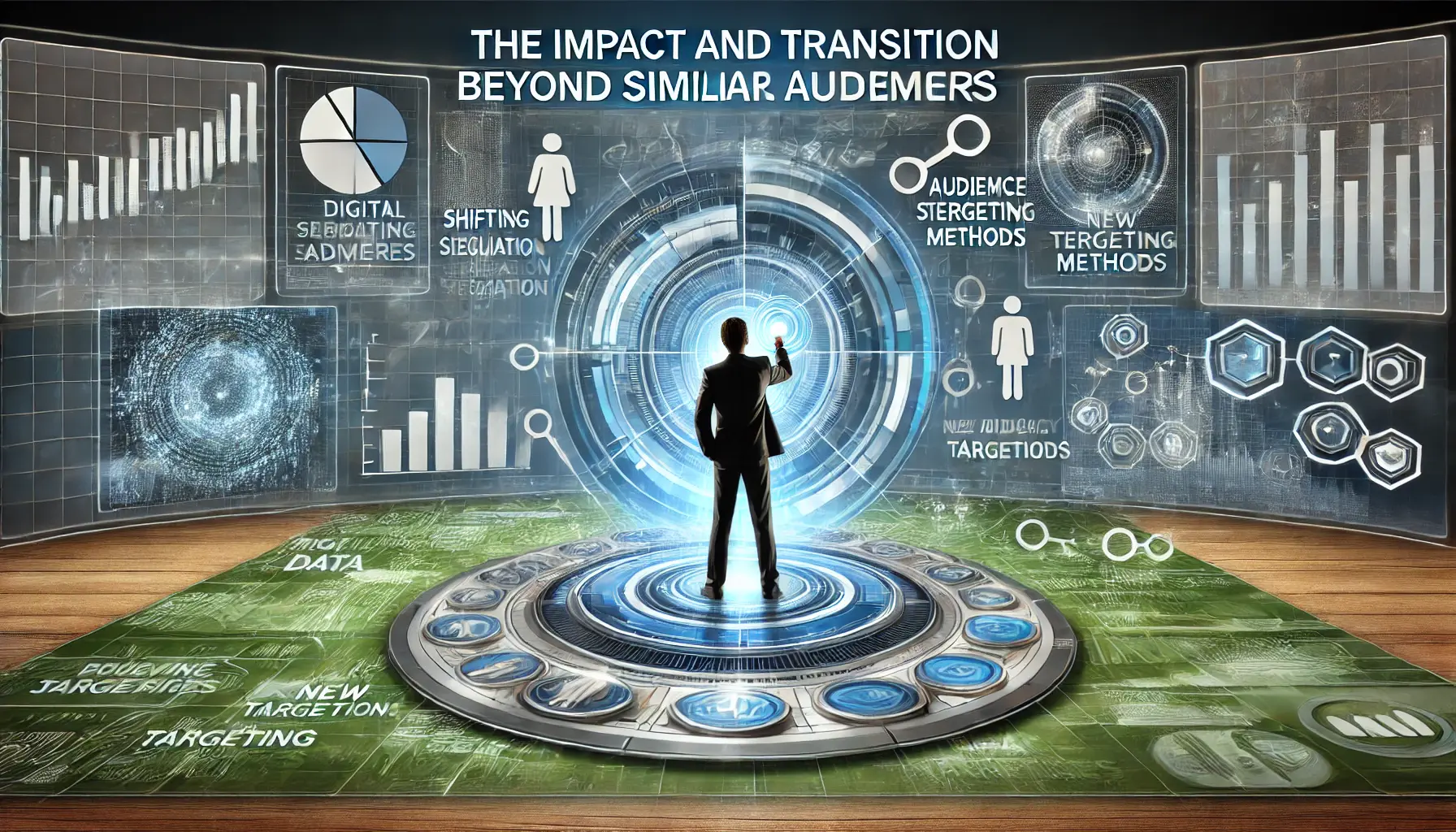
A visual representation of the transition beyond Similar Audiences, focusing on evolving strategies and new targeting methods.
Summarizing the Impact and Transition: Moving Beyond Similar Audiences
The deprecation of Similar Audiences in Google Ads marks a significant turning point in the world of digital advertising.
This change challenges marketers to rethink their strategies, adapt to privacy-centric solutions, and embrace innovation.
While the transition may seem daunting, it opens the door to a more responsible and future-ready advertising ecosystem.

A visual representation of the legacy of Similar Audiences, highlighting past achievements in audience targeting and data segmentation.
The Legacy of Similar Audiences
Similar Audiences have long been a powerful tool for expanding reach and enhancing targeting precision.
Their ability to identify users with shared characteristics helped advertisers achieve significant campaign success.
However, as privacy regulations tighten, the need to transition away from such features has become inevitable.

A visual representation of key takeaways for advertisers, focusing on growth, optimization, and decision-making in digital marketing.
Key Takeaways for Advertisers
Adapting to the post-Similar Audiences era involves implementing new strategies and leveraging alternative tools effectively.
Here are the essential takeaways:
- Adopt First-Party and Zero-Party Data: These data types offer more personalized insights and align with privacy standards.
- Employ Innovative Targeting Techniques: Contextual targeting and AI-powered solutions serve as worthy replacements for traditional methods.
- Adopt Privacy-Focused Practices: Consent management platforms and aggregated reporting help maintain user trust and regulatory compliance.

A visual representation of ‘What’s Next’ in digital advertising, symbolizing new opportunities and forward-thinking strategies.
What’s Next
The future of audience targeting involves balancing innovation with privacy.
Marketers must stay ahead of the curve by leveraging technologies like optimized targeting, audience expansion, and smart bidding.
Furthermore, integrating AI and machine learning into campaign planning will unlock new avenues for precision and scalability.
As the digital landscape continues to evolve, advertisers who adapt quickly and strategically to these changes will thrive.
The retirement of Similar Audiences is less of an ending and more of a new beginning—a sophisticated, user-centered advertising paradigm.
The transition away from Similar Audiences demands innovative thinking and adoption of alternative strategies to maintain effective audience targeting.
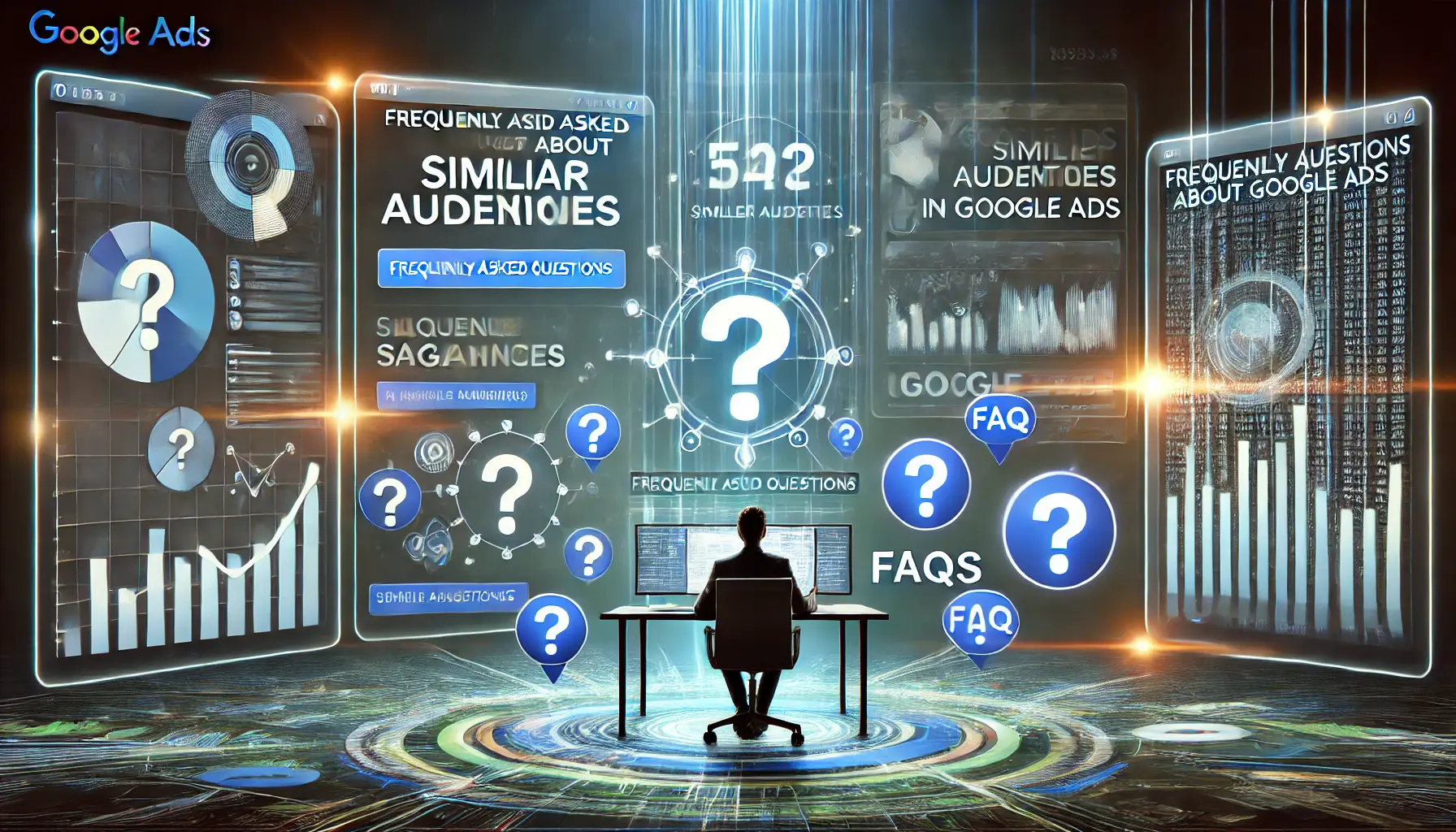
A visual representation of frequently asked questions about Similar Audiences in Google Ads, focusing on audience data and advertising metrics.
Your campaigns can be managed by an agency specialized in Google Ads, check out our service page.
Frequently Asked Questions about Similar Audiences in Google Ads
With Google Ads’ recent phasing out of Similar Audiences, several questions have cropped up among advertisers about what this change means for their campaigns.
Below are some of the most frequently asked questions and succinct answers to help you navigate this transition.
Similar Audiences are segments that allow advertisers to target users with characteristics similar to their existing customers, enhancing reach and engagement.
Google is retiring Similar Audiences to prioritize user privacy and comply with evolving data protection regulations, shifting towards more durable, privacy-centric solutions.
Starting May 2023, new Similar Audience segments ceased generation, and by August 2023, existing segments were removed from all campaigns.
Advertisers can utilize optimized targeting, audience expansion, and Smart Bidding strategies as effective alternatives to reach relevant audiences.
Optimized targeting uses machine learning to find new and relevant audiences beyond your selected segments, enhancing campaign performance.
Audience expansion allows you to increase your reach by adding users who exhibit behaviors similar to your targeted audience segments.
Campaigns using Similar Audiences may see fluctuations in performance; you will need to consider alternative approaches to ensure continued success.
Begin integrating first-party data, explore alternative targeting options, and monitor campaign performance to adapt to the upcoming changes.
